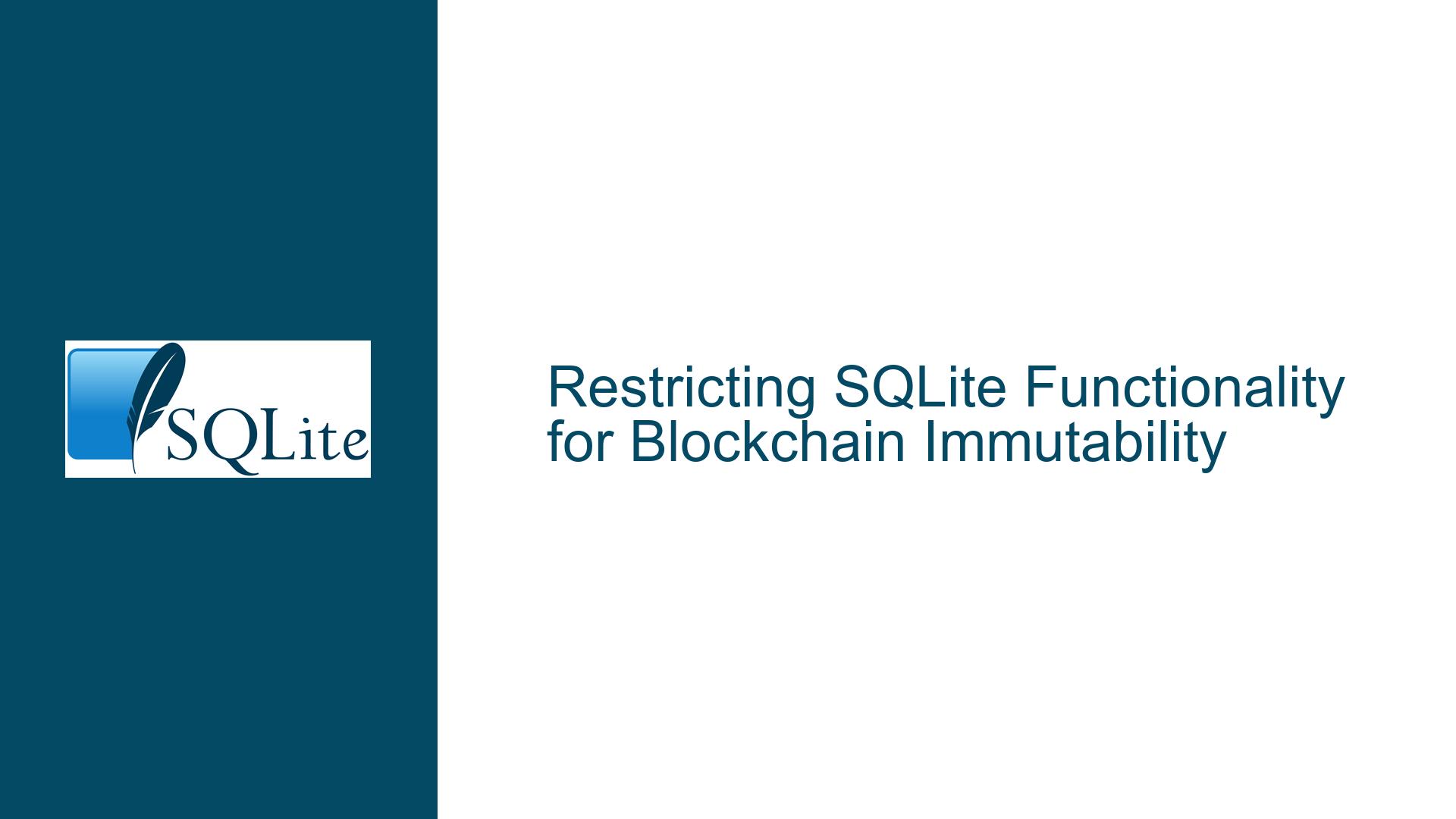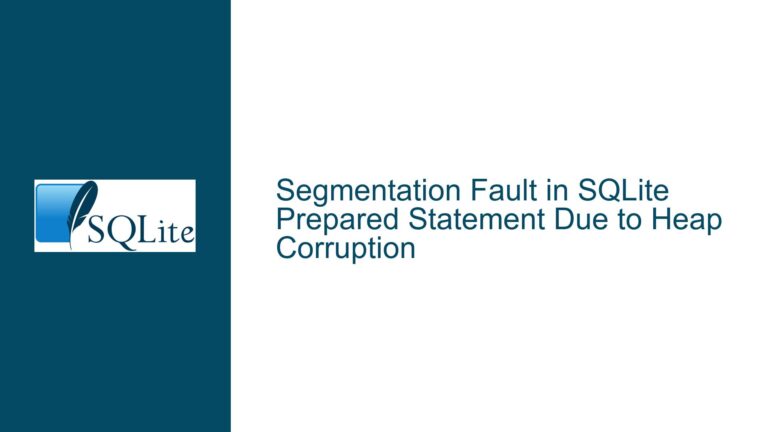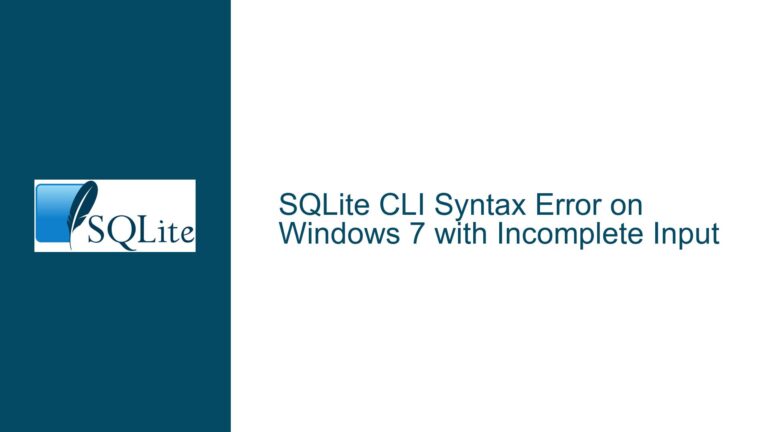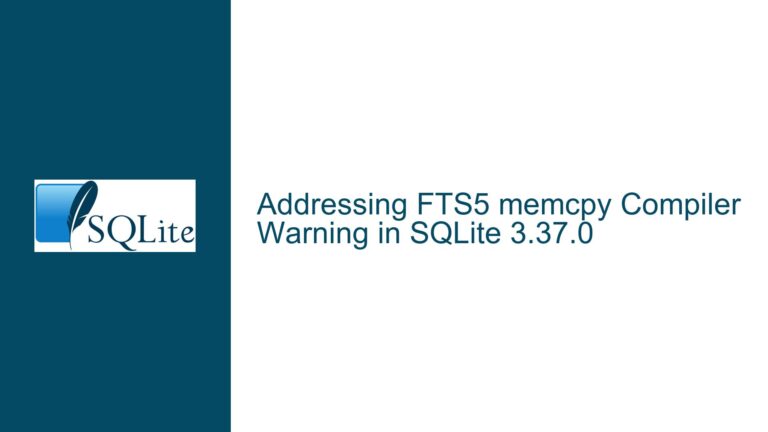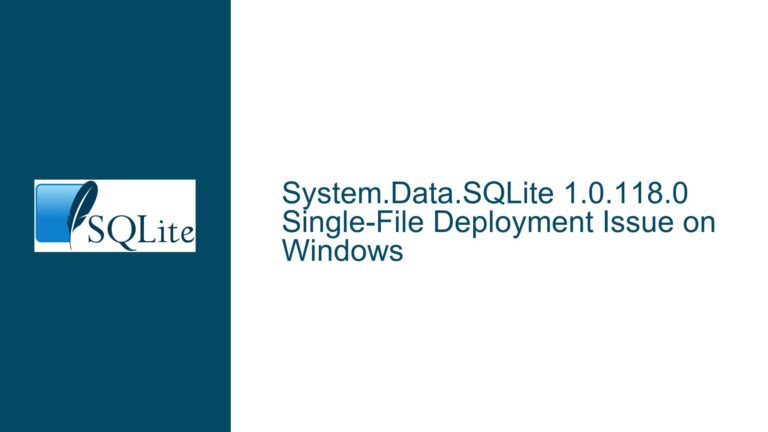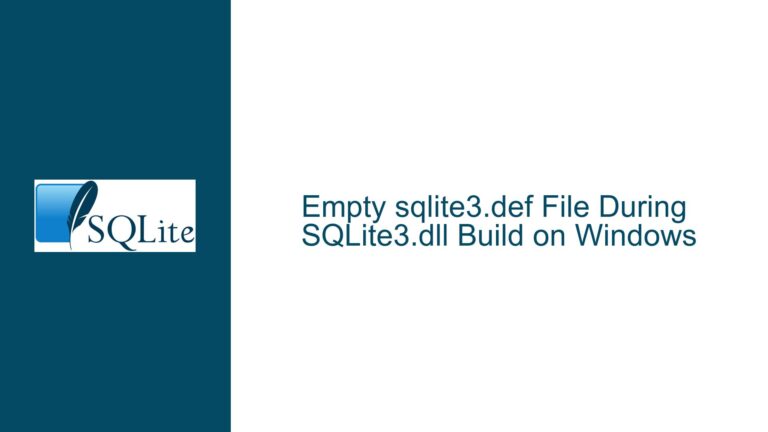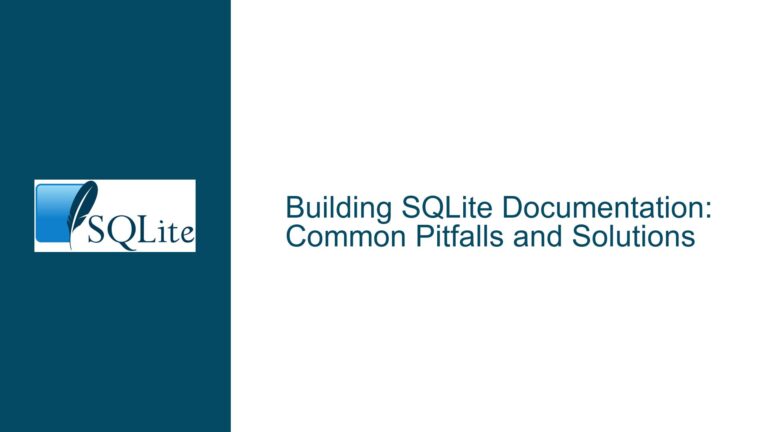Restricting SQLite Functionality for Blockchain Immutability
SQLite Compilation for Limited Command Execution
SQLite is a versatile and lightweight database engine that supports a wide range of SQL commands, including CREATE TABLE, INSERT, DELETE, and ALTER. However, in certain specialized use cases, such as blockchain systems, the ability to modify or delete data after it has been written is undesirable. Blockchain systems rely on the immutability of data, meaning that once a record is added to the chain, it should not be altered or removed. This requirement poses a unique challenge when using SQLite, as the database engine inherently supports commands that could compromise the integrity of a blockchain.
The core issue revolves around whether SQLite can be compiled or configured to support only a subset of SQL commands, specifically CREATE TABLE and INSERT, while disabling or restricting other commands like DELETE and ALTER. The goal is to ensure that the database can only be written to in a unidirectional manner, aligning with the principles of blockchain technology. This would prevent any unauthorized or accidental modifications to the data, thereby maintaining the integrity of the blockchain.
However, SQLite’s design philosophy emphasizes flexibility and simplicity, which means that it does not natively support the restriction of SQL commands at compile time. While it is possible to modify the SQLite source code to remove or disable certain commands, this approach is not recommended for several reasons. First, modifying the source code would require maintaining a custom fork of SQLite, which could introduce compatibility issues and increase the complexity of the system. Second, even if certain commands are disabled at compile time, the SQLite file format itself does not inherently enforce immutability. This means that any standard SQLite engine could still potentially modify the database file, bypassing the restrictions imposed by the custom compilation.
Run-Time Authorization and Custom Virtual File Systems
Given the limitations of compile-time restrictions, a more practical approach to enforcing immutability in SQLite is through run-time authorization and custom Virtual File Systems (VFS). SQLite provides a robust mechanism for controlling access to database operations at run time using the sqlite3_set_authorizer function. This function allows developers to register a callback that is invoked whenever an SQL statement is executed. The callback can then approve or deny specific operations based on predefined criteria.
For example, in a blockchain system, the authorizer callback could be configured to allow only CREATE TABLE and INSERT statements, while rejecting DELETE, UPDATE, and ALTER statements. This approach provides a high degree of control over the types of operations that can be performed on the database, without requiring modifications to the SQLite source code. However, it is important to note that the authorizer function only applies to the specific database connection on which it is set. This means that other connections to the same database file, such as those made by a different application or SQLite engine, would not be subject to the same restrictions.
To address this limitation, developers can implement a custom Virtual File System (VFS) that enforces immutability at the file system level. A custom VFS can intercept all file operations performed by SQLite, such as reads, writes, and deletes, and apply custom logic to ensure that only authorized operations are allowed. For example, the custom VFS could prevent any modifications to the database file after it has been written, effectively enforcing immutability. This approach provides a stronger guarantee of data integrity, as it operates at a lower level than the SQLite engine itself.
In addition to run-time authorization and custom VFS, developers can also explore the use of Virtual Tables (VTABs) to implement blockchain-like behavior within SQLite. Virtual Tables allow developers to define custom table implementations that can interact with external data sources or enforce specific constraints on data access. For example, a Virtual Table could be designed to only allow appending new records, while preventing updates or deletions of existing records. This approach can be combined with run-time authorization and custom VFS to create a comprehensive solution for enforcing immutability in SQLite.
Implementing Immutability with PRAGMA journal_mode and Database Backups
While run-time authorization and custom VFS provide effective mechanisms for enforcing immutability, there are additional steps that can be taken to further enhance the integrity and reliability of a blockchain system built on SQLite. One such step is the use of the PRAGMA journal_mode command to configure the database’s journaling behavior. The journal is a critical component of SQLite’s transaction management system, and it plays a key role in ensuring data consistency in the event of a crash or power failure.
By setting the journal mode to WAL (Write-Ahead Logging), developers can improve the performance and reliability of the database, while also reducing the risk of data corruption. WAL mode allows multiple readers and writers to access the database concurrently, without blocking each other. This can be particularly beneficial in a blockchain system, where multiple nodes may need to read and write to the database simultaneously. Additionally, WAL mode provides a higher level of durability, as changes are written to a separate log file before being applied to the main database file. This reduces the likelihood of data loss in the event of a crash.
Another important consideration for ensuring immutability in a blockchain system is the implementation of regular database backups. Backups provide a safeguard against data loss or corruption, and they can be used to restore the database to a previous state if necessary. In the context of a blockchain, backups can be used to create checkpoints that represent the state of the database at a specific point in time. These checkpoints can then be used to verify the integrity of the blockchain, by comparing the current state of the database to the checkpoint.
To implement database backups, developers can use the sqlite3_backup API, which provides a convenient way to create a copy of the database. The backup process can be automated using a script or a scheduled task, ensuring that backups are created at regular intervals. It is important to store backups in a secure location, such as a remote server or cloud storage, to protect against data loss due to hardware failure or other disasters.
In addition to backups, developers can also implement a versioning system to track changes to the database over time. This can be achieved by creating a separate table that records the history of all changes made to the database, including the type of operation (e.g., INSERT, UPDATE, DELETE), the affected rows, and the timestamp of the change. This history table can then be used to audit the database and verify that no unauthorized changes have been made. While this approach does not prevent changes from being made, it provides a mechanism for detecting and reverting unauthorized modifications.
In conclusion, while SQLite does not natively support the restriction of SQL commands at compile time, there are several strategies that can be employed to enforce immutability in a blockchain system. These include run-time authorization, custom Virtual File Systems, Virtual Tables, and the use of PRAGMA journal_mode and database backups. By combining these techniques, developers can create a robust and reliable system that aligns with the principles of blockchain technology, ensuring that data remains immutable and secure.
